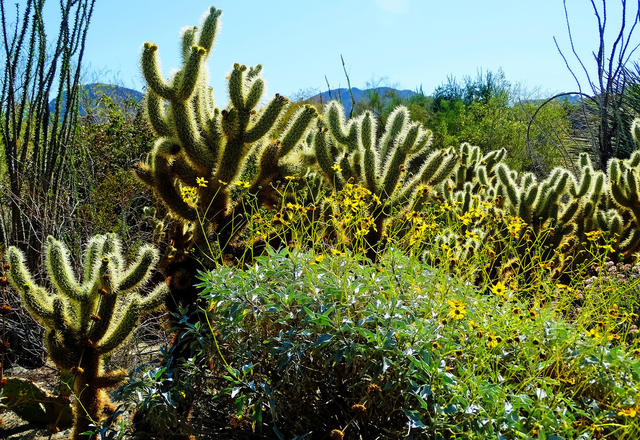Home » Regions » North America » North American Deserts
North American Deserts
Last updated: July 21st, 2020
To check where a specific point lies, you can look it up in our Ecoregion Locator.
↑Map Legend & Subregion List
This list will help you navigate the regions in case you have problems with viewing or clicking the interactive map above.
| Name | † | Color on Map |
| Cold Deserts | ✓ | |
| Warm Deserts | ✓ |
† Status: ✓ = Complete ○ = Needs Image … = Incomplete ∅ = Stub Only
↑Progress
Partially Complete | With Images | Complete w/ Images |
Get involved! You can help our ecoregion articles progress faster. Contact us if you have any additions or corrections to any of these articles. You can also donate to support our ongoing work.
↑About the North American Deserts
The North American Deserts represent a diverse collection of different arid regions. In the north and central areas, the deserts are limited to interior areas in the rain shadow of the coastal mountain ranges. As one progresses south, a persistent high pressure system over the West Coast of Mexico pushes rainfall-producing systems away, leading the deserts to extend the whole way to the coast, south through most of Baja California. Along the Pacific coast, the deserts transition into Mediterranean California to the north, and to Tropical dry forests to the south. These regions have opposite seasonal precipitation patterns due to the high pressure system moving north in summer and south in winter. Central Mexico also has a separate desert produced by rain shadow to the east of the mountains.Within this region, there are radically different ecosystems, often influenced by altitude and topography. Although all of this region, on average, qualify as deserts by moisture levels, the total amount of precipitation, the seasonal pattern of rainfall, and the ranges of temperature can vary from one desert to another.
The warmer deserts, such as the low-altitude Sonoran desert, have higher biodiversity and higher structural diversity in their plants owing to the greater portion of plants that can survive the coldest temperatures. Deserts bordering the ocean also experience more moderate temperatures and more humid air. Higher-altitude and more interior deserts, on the other hand, can have huge swings of temperature, cold temperatures in winter, and drier air overall, all of which severely limit plant growth.
 In spite of being extremely dry, the Sonoran desert can have a surprisingly lush landscape. Photo © Don Graham, CC BY-SA 2.0. Original Photo on Flickr.
In spite of being extremely dry, the Sonoran desert can have a surprisingly lush landscape. Photo © Don Graham, CC BY-SA 2.0. Original Photo on Flickr.Plant Lists & In-Region Search
List Native Plants - List All Plants
Warning! This region extends outside the lower 48 US. We have only completed range maps for all plants in the lower 48 US; these lists and searches may thus have omissions for species which only occur in the portion of this region outside the lower 48 US.


